Meet the Crossbill Birds: Ultimate Nomads
Updated: Jan. 21, 2022
From their funky-looking beaks to peculiar migrations, see and learn what makes red crossbills and white-winged crossbill birds so special.
Walking into a pine grove, you hear soft, unfamiliar calls overhead. Looking up, you see a dozen small birds clambering about over the pine cones, acting like tiny parrots. Some are red, some are dull yellow-green. Take a good look. These are crossbill birds, and they may stay put for a month or may be 100 miles away tomorrow.
Meet 7 types of finch birds to look for in winter.
Types of Crossbill Birds
Two species, red crossbills and white winged crossbills, are widespread in North America. And they’re among the world’s most unusual birds. Wandering flocks of white winged or red crossbills may show up far from evergreen forests, especially in winter. Occasionally they visit bird feeders for sunflower seeds. But you’re much more likely to see them in groves of conifers, such as in parks or cemeteries. If you find a flock, count yourself lucky to meet the ultimate nomads of the bird world.
Watch your feeders for common redpolls this winter.
White Winged Crossbill
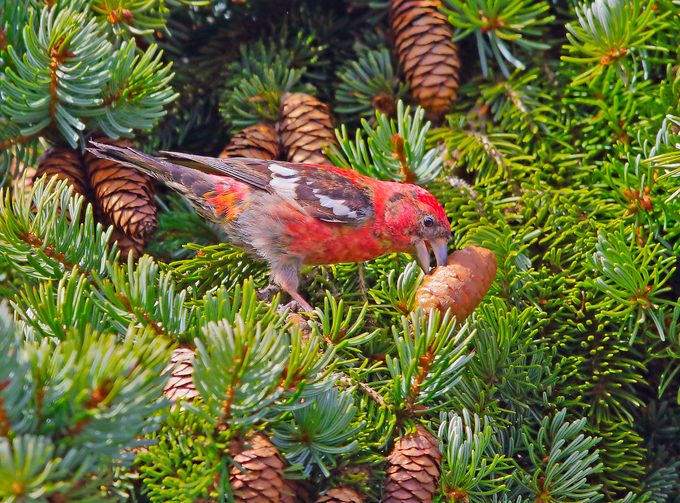
Overall ranges of the two species overlap, but white-winged crossbills are mainly farther north, in spruce forests across Alaska, Canada and the northernmost states. This bird that isn’t a common visitor to feeders. They are great nomads, migrating at almost any season, and settling down to nest and raise young when they find an abundant crop of spruce cones. When crossbills leave your yard, they may go in any direction. You may see them again, but they’re so unpredictable that we can’t guess when they might arrive!
Meet the rosy finch (and learn the best place to see one).
Red Crossbill
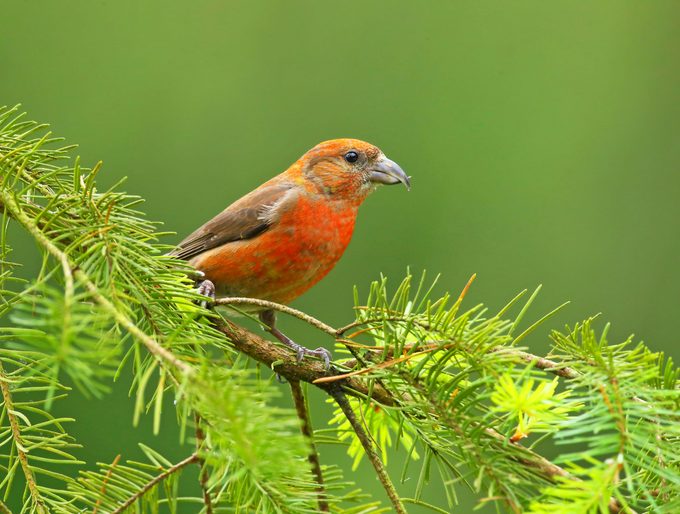
Red crossbills occur from southern Alaska across Canada and the northern states, farther south in the Appalachians, and in the western mountains, with other populations in the mountains of Mexico and Central America. There’s one unique thing about the red crossbill: It can be divided into 10 types in North America. These are not subspecies but groups separated by slightly different voices and by preference for certain trees.
For example, Type 1, found mainly in the Appalachians, has a short callnote and prefers red spruce and eastern white pine seeds. Type 2, widespread in the Rocky Mountains, has a deep, husky callnote and prefers the seeds of ponderosa pine. Type 3, common in the Pacific Northwest but wandering widely, has a squeaky callnote and prefers hemlock seeds. All of them wander widely across the continent, often overlapping but rarely interbreeding. Scientists are still trying to figure out if some of them should be classified as distinct species.
Check out the updated winter finch forecast for 2021-22.
Cassia Crossbill
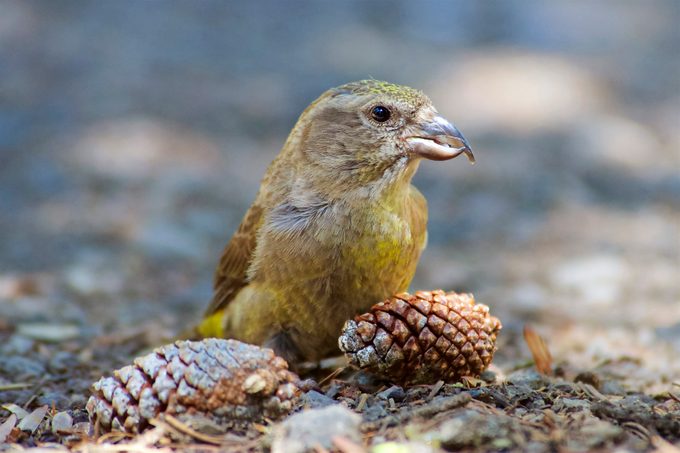
Southern Idaho has its very own bird that is not found anywhere else in the world. The Cassia crossbill looks very much like a red crossbill, and it wasn’t officially recognized as a separate species until 2017.
Although its relatives wander far and wide, the Cassia crossbill doesn’t stray from the lodgepole pine forests of Idaho’s South Hills and Albion Mountains. Why? Because the two areas have no red squirrels. In most places, lodgepole pine cones are quickly stripped of seeds by red squirrels. The crossbills grab whatever seeds they can in an area and then move on. But in these two isolated mountain ranges where there is no competition from squirrels, Cassia crossbills dine on those seeds all year without having to fly away in search of more.
Check out more birds you can only see in one place on Earth.
Crossbill Bird Beak
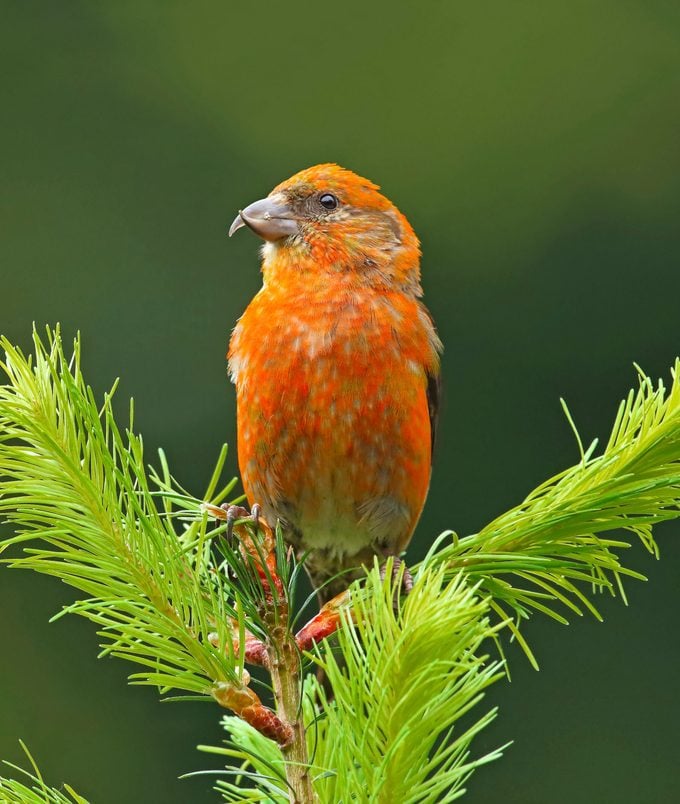
When you look at a crossbill’s beak, it’s obvious how it got its name. The bill is thick at the base, but the mandibles cross instead of meeting at their narrow tips. This shape would be awkward for picking up most items, but it’s perfect for one thing. It allows the birds to pry open the cones of pines, spruces, hemlocks and other evergreens.
For most small birds, getting seeds out of a cone is too complicated to be worth the effort. For crossbills, it’s a snap. The bird inserts its beak between two cone scales and then closes it so that the crossed tips push the scales apart. Twisting its head, the bird works to reach the seed buried between the scales. Using its tongue against grooves on the inside of its beak, it pulls out the seed, cracks the dry husk and swallows the kernel.
This happens in a lot less time than it takes to describe it. A crossbill can extract and eat more than 20 seeds per minute, which means better than one every three seconds!
Learn about the different types of bird beaks and how birds use them to eat.
Nomadic Behavior and Nesting
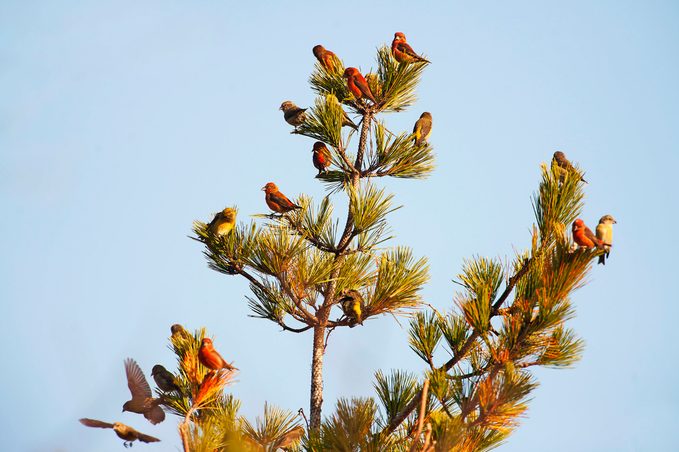
When conifers are loaded with cones, these birds have an easy food source. But big cone crops don’t last and are extremely variable from year to year, so crossbills move until they find the next good food supply. In any given forest, crossbills might be abundant one year and completely absent the next.
In most kinds of birds, each male has a regular nesting territory and returns to it the same time every year to pair up and raise a brood of young. Crossbills throw those rules out the window. When a roving flock comes to a forest where lots of cones are ripening, they settle in, build nests and lay eggs.
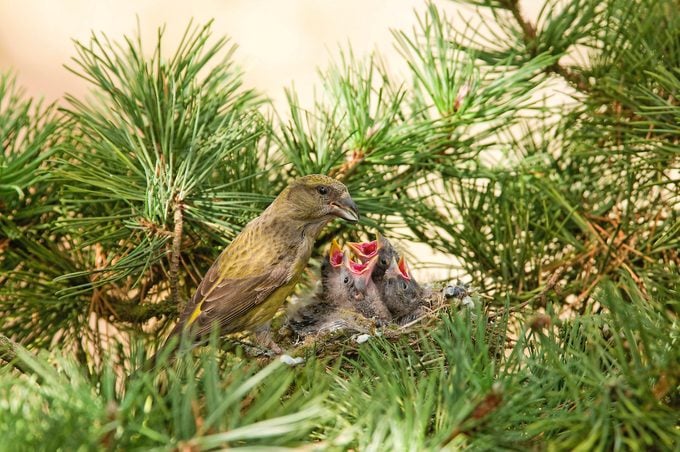
After the young birds are old enough to fly, if the seed supply is starting to run out, the flock may move on. Those particular birds might never visit the place again after food runs out. Crossbills don’t follow the guidelines of a calendar or a map. They raise young at almost any time of year, whenever they find a good cone crop. For example, in one area of eastern Canada, white-winged crossbills have been found nesting at four different times in one year—in February, April, July and September—feeding on seeds of three different kinds of spruce.
Learn more about bird irruptions and how birds migrate unpredictably.




















